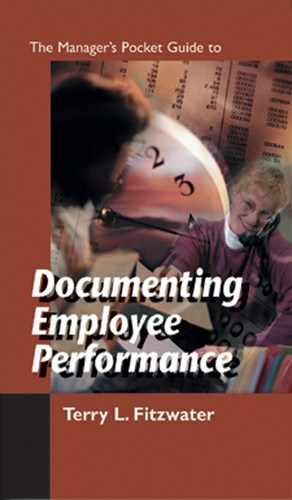In the comic strip Blondie, Mr. Dithers could fire Dagwood at the least provocation and get away with it. But is that the reality of today’s workplace? Obviously the answer is a resounding “No!” The license by which bosses like Mr. Dithers could, at one time, fire any employee without cause and without due process was backed by the doctrine of employment at will. As the name suggests, this doctrine states that employment is “at the will of the employer.” It has generally survived the times, and appears in some form in most policy manuals (see sample on the following page), but it does not confer the power it once did.
Sample: Employment at Will Statement
The company believes in and adheres to the doctrine of employment at will. Provisions in this manual should not be interpreted as a promise of continued employment, a guarantee of due process, or a commitment to existing terms/ conditions of employment, other than the at will employment relationship, which can only be altered by an explicit form signed by the president of the company.
Both the company and the employee have the right to terminate the employment relationship, with or without cause, at any time and for any reason.
It is important for you to know how the doctrine is worded in your company’s policy manual and to be aware of any federal or state legislation that would have a bearing on the exercise of the doctrine. In both cases, they are deal modifiers to the doctrine. And they are guaranteed to cause any organization trouble if managers and other leaders are unaware of them or choose to ignore them.
Let’s say a manager terminates an employee over the age of 40 without a good reason. A lawsuit may result even if the company has an at-will statement, because federal legislation to prevent age discrimination is unaffected by at-will employment status.
The following are some of the many modifiers to employment at will.
• Its wording in employee handbooks
• Its wording in policy and procedure manuals
• Public policy
• Americans with Disabilities Act of 1990
• Title VII—Civil Rights Act of 1964
• Age Discrimination in Employment Act of 1967 (ADEA)
• Implied contracts
– job security
– just cause
– longevity
• Your own sensibilities
– If it doesn’t feel right, don’t do it.
Each modifier has its own set of parameters. Unlike the parameters of legislative modifiers, company-related ones can be changed as needed. If you find, for example, that your employee handbook uses the word permanent to describe employees, you can and should change it. Someone could argue, and courts have agreed, that such a description sets the expectation for life-long employment. Replacing the word with regular is the suggested course of action. It is always a good practice to screen any documents given to employees for this and similar language that could “tie your hands” in a disciplinary situation.
Although an at-will statement is not a defense to all lawsuits, it is still a good idea to make sure it appears in your employee handbook as well as policy manual. It does set the parameters of employment and, when worded carefully, can undercut an employee’s assertion he/she anticipated life-long employment, which is sometimes an issue in termination cases (an employer should make it clear that such expectations are not realistic). A good place to raise the issue is in your “offer” letter to prospective hires. Place your at-will statement in the letter. I also recommend that you have each employee sign the letter. This acknowledges that the employee has been informed of the at-will employment relationship. The issue can be revised and reinforced at a new hire orientation where they can sign a separate agreement acknowledging the at-will employment relationship.
